-
About
- About Listly
- Community & Support
- Howto
- Chrome Extension
- Bookmarklet
- WordPress Plugin
- Listly Premium
- Privacy
- Terms
- DMCA Copyright
- © 2010-2025 Boomy Labs


 Meghan Wilson
Meghan Wilson
Listly by Meghan Wilson
This list includes several resources for middle school students as they work to improve their reading and writing skills in Social Studies. As we study the Civil Rights Movement, you can view primary sources such as a video from Martin Luther King, Jr's "I Have a Dream" speech, look at pictures, watch interviews, and read informative articles. As you read through the articles and texts, use the reading strategies taught in the last two resources. When writing about the Civil Rights Movement, you can reference the resources from the list. Also, remember the information in the resources for identifying the main idea in a passage.
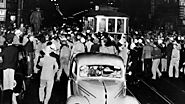
Log in to see this resource. You will read about the beginning of the Civil Rights Movement after WWII. This is a great article to understand how racial tensions started after the war. It explains how the minorities struggled to find jobs, get mortgages, and be awarded loans. The article details President Truman's efforts to end segregation in the military. NewsELA allows readers to read articles on their Lexile level. The Lexile range for this article is from 600L to 1200L.

This resource, provided by the National Park Service, lists important sites during the Civil Rights Movement. This is a wonderful resource since we want to focus on the events in Georgia. Read about 4 different places in Georgia where a significant event happened during the Civil Rights era.

Use this resource to view primary sources and secondary sources on the Civil Rights Movement. An important skill for you to have is to be able to analyze primary and secondary sources. Primary sources help us foster a deeper understanding of events. It makes the event seem more personal. This resource is perfect for our reading standard L6-8RHSS2: Determine the central ideas or information of a primary or secondary source; provide an accurate summary of the source distinct from prior knowledge or opinions.

The Library of Congress provides a vast number of photographs and documents from different historical events.You can browse the different collections and take in the history through pictures. You can search for specific events, such as the Albany Movement, or just a general search for the Civil Rights Movement. This is a great resource for you to use to visualize the sentiments of the time.
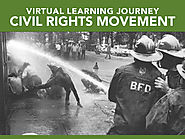
This resource covers all the major aspects of Civil Rights including Jim Crow Laws, Plessy v. Ferguson, Atlanta Race Riot, Brown v. Board of Education, Montgomery Bus Boycott, Freedom Rides, Dr. Martin Luther King Jr., Civil Rights Act of 1964, Georgia's 1956 State Flag, Sibley Commission, and the Albany Movement. Go back in time by viewing videos and pictures during the time of the Civil Rights Movement. Explore artwork and music from the era. Research notable people such as Booker T. Washington, Alonzo Herndon, and W.E.B. Du Bois.
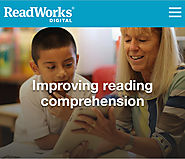
Log in required to view this resource. This link is to an excerpt from Martin Luther King Jr.'s letter from the Birmingham City Jail. Read the article to understand Dr. Martin Luther King Jr.'s views about non-violent direct action. How was this different from other actions taken by people during the Civil Rights Movement. What is the main idea of this passage?

This resource is a great interactive HyperDoc. There are several activities including watching videos, using Google Maps, reading articles, and creating a poster. Use the links in each of the engage sections. Great resource found using List.ly

The Civil Rights Digital Library provides an abundance of primary sources from articles to news reports to interviews. This digital library allows you to search by place, event, people, and topic. Since this is Georgia History, I want you to spend some time looking at the resources for Georgia. Check out one of the interviews from the Voices Across the Color Line Oral History Collection. There are several videos taken during pivotal moments in Civil Rights history in Georgia. For example, the arrival of the first African-American undergraduate students at the University of Georgia in 1961. Take some time to look through some of these videos and make note of the ones you found particularly interesting.
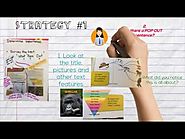
This video explains main ideas and how to identify the main idea. Watch this video to get strategies to help find the main idea in nonfiction passages. Practice finding the main idea with the examples given in the video.
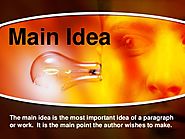
Use this resource to help you find the main idea of a passage. Also, think about how to write a paragraph including a main idea and supporting sentences. Apply the strategies in this presentation to find the main ideas of the nonfiction articles you read about Civil Rights. When writing, use the organizational chart in your planning.
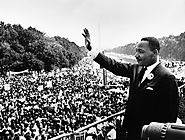
I Have a Dream Speech
Martin Luther King's Address at March on Washington
August 28, 1963. Washington, D.C.
This is a video of Dr. Martin Luther King Jr.'s "I Have a Dream Speech." Have you ever watched the famous speech from Martin Luther King, Jr.? Imagine you were there in Washington, D.C. How would you feel? As you watch the speech, think about what was going on at this time. Try to understand what makes Martin Luther King, Jr. a great leader. How did the people react to his speech?
